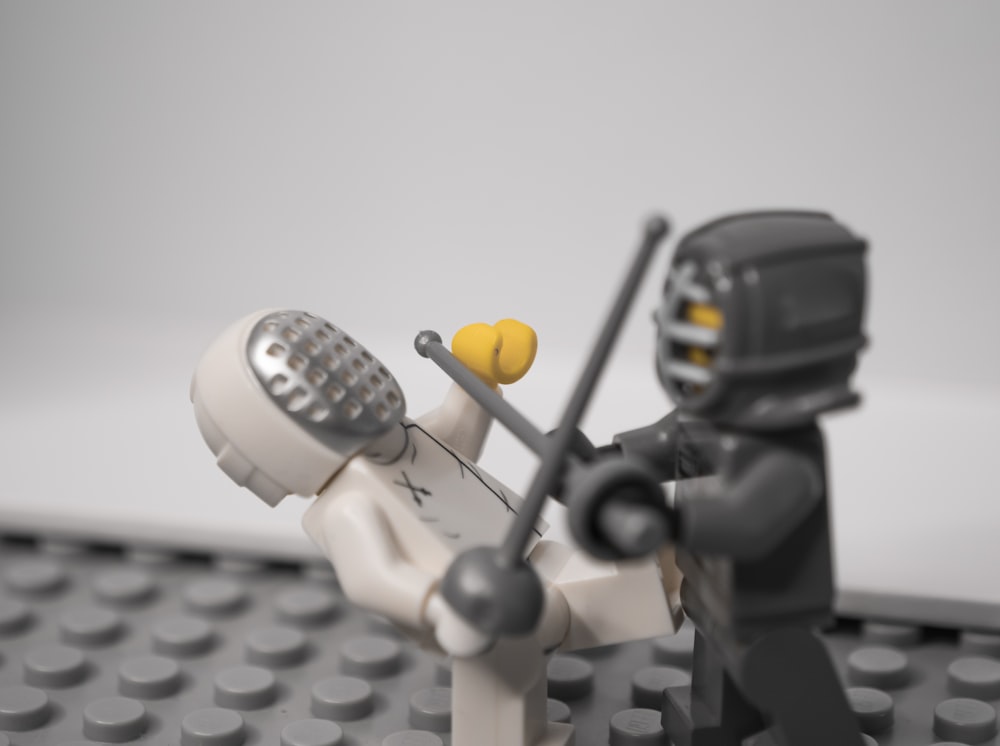With the start of a new year, we all face the same issue – Goal planning and actually sticking to it. Here’s how to kick procrastination standing in-between us and our goals in 5 ways!
Here’s the general article structure and you can jump ahead with these links:
- What is procrastination?
- Why do people procrastinate?
- Why should you stop procrastinating?
- 5 ways to motivate yourself and stop procrastinating
The planning is simple to carry out, but actually sticking to them throughout the year is the problem. Many of us will face what we call “procrastination” or the lack of motivation at times to take steps towards achieving what we have planned at the start.

“I think I’ll do that later. How about doing this first?” and we end up leaving the task aside and not coming back.
Does this sound familiar?
But what lies behind our motivations to act?
Procrastination is a challenge we have probably faced at some point in our lives. This includes delaying, pushing, avoiding issues that matter. Thus in this article, we will be discussing what procrastination is, the science behind it, and how to curb it to improve our productivity.
Hence, writing this article also serves as a reminder to myself to procrastinate less and take action instead!
Procrastination:
According to Cambridge Dictionary,
Procrastination is “to keep delaying something that must be done, often because it is unpleasant or boring”.

When you are facing troubles persuading yourself to do the things you should or need to do. Moreover, instead of working on the important meaningful tasks, you find yourself performing trivial activities.
That’s when you know you are procrastinating.
If you need an example, here’s one:
You know you need to file your monthly tax reports that are due on the last week of the month. It is currently mid month and you think that there’s still lots of time before it’s due and avoid doing it now.
Fast forward 1.5 weeks, it’s now the last week of the month and you realize again you need to file your tax reports that are due in 2-3 days time.
This intentional putting off of work is procrastination!
Why do people procrastinate?
Now that you’ve understood the definition of “procrastination”, why do we do it?
It has been revealed through behavioral psychology research that despite our plans and good intentions for the future, there is a phenomenon known as “time inconsistency” that drives us to procrastinate.
This “time inconsistency” phenomenon refers to our brain’s tendencies to value immediate rewards as better than the rewards of delayed gratification.
To explain this concept, consider this example:

Your future self wants to be lean and fit such that you lessen your future health related risks. However, your present self wants a fried chicken or a slice of cake, etc.
Of course, there’s nothing wrong with just a few unhealthy meals, but we all know that we should eat clean to prevent weight related health problems 10 – 20 years down the road. However, these consequences seem very far away and not in the near future. Hence, you continue your unhealthy eating habits.
This makes it difficult to change old habits and many of us fall back into our old patterns even after making these long term goals. Backed by science, our brain values the long term benefits when they are in the future but places greater emphasis on the immediate satisfaction it gets in the present moment.
Hence, to motivate our present selves into taking action and reducing procrastination, we need to find ways to move future rewards and possible consequences into the present moment.
Before we move on, you might be thinking that you’re fine with your current lifestyle habits or choices.

So why choose to fight procrastination?
Do you want to live with feelings of regret from missed opportunities because of not starting earlier? Not accomplishing what you have initially set out to do?
People regret more about the things they haven’t done rather than the things they have done.
There are countless opportunities presented to you. However, when you procrastinate, you are wasting time that could be invested into something more meaningful.
By overcoming the constant thoughts of procrastination, you are able to accomplish more and better utilize your potential. At the same time, it is an important skill one may possess!
How do we kill the procrastinating tendencies ?
1. Break down long term goals into shorter milestones.
This means to break your goals or tasks into smaller, more achievable chunks within a short timeframe. Make it easy for you to get started and trust that you will rely on the momentum you’ve garnered to carry you further.
I’ve picked up this “2-minute rule” from James Clear. It helps you overcome procrastination and laziness by making it so easy to take action that you just can’t say no.
How this works is that a new action or habit should take you less than 2 minutes to get started.
For example, your aim is to be more active or head to the gym more often. Your first step could be to just change into your activewear or just setting aside your activewear for tomorrow’s gym session. These actions are fairly quick to complete.
Your activewear will serve as a reminder and motivation to move since you’re already in your sport clothing. This will continue to snowball and you’ll slowly start to build the habit of exercising.
This is just a very general example to demonstrate how this “2-minute rule” works.
Another method I personally adopt is to break down my long term goals into smaller ones within short timeframes. A digital planner has been very useful for me in this aspect.

For example, my long term financial goal is to save up $100,000 in 10 years. This means that each year I would need to save a minimum of $10,000.
A sum of $10,000 yearly breaks down into about $835 monthly.
$835 monthly further divides into about $210 weekly, and $30 daily.
This thorough breakdown of figures allows me to visualize the amounts I would need to put aside. Also, it allows me to plan ahead and devise ways to reach this financial goal.
This also helps in creating a sense of urgency as not fulfilling the daily goal means that I would need to work harder in the future to compensate and achieve the same amount.
Moreover, by making your tasks more achievable, it helps you to maintain momentum over the long run and improves your overall productivity and effectiveness for the day!
2. Make the rewards and consequences of your actions more immediate.
When the benefits and consequences of your actions seem more apparent, it becomes easier to kick the habit of procrastinating.
There are many ways in which we can bring future rewards and consequences into the present moment. To bring future rewards forward, equate something you love with something you dread.

Here are some examples:
- Eat out only when you are meeting with clients.
- Catch up on your favorite shows only while on the treadmill.
- Listen to your favorite podcasts/audiobooks only while on your run.
This makes doing something you dislike less dreadful, and you might actually look forward to the next session!
As for your future consequences, they can also be made to appear more immediate as such:
If your goal is to work on your health, grab a workout buddy and agree on a workout schedule each week. Skipping a workout will make you look bad.
Similarly, with Covid precautions in place, gyms are now subject to a bookings only basis. Make a booking ahead of time and if you decide to skip it, you will likely forfeit the money you paid. Hence, the consequence.
Finding ways to deter you from skipping out on doing something you dread makes this method effective. Hence, it helps it the building of a new habit.
3. Consistency is key.
Now that you know how to motivate yourself to kick the procrastination habit, it’s time to convert it into a long term thing.
We don’t want this procrastinating habit to return do we?
To ensure consistency, we want to force ourselves to make tough decisions and remove the friction of starting while avoiding multi-tasking.
Don’t bombard yourself with a long list of goals to achieve within the same timeframe. Instead, list down all the goals you’d like to achieve, narrow it down to your top 5 and focus on them solely. Until you have completed them, you don’t involve the other goals that you have not placed on your top 5.
Focus on your daily tasks and avoid multi-tasking. You don’t want to constantly divide your time in different ways and end up affecting your productivity as each task takes a longer time to complete.
4. Adopting visual cues.
Visual cues are visual reminders that can come in the form of to-do lists, habit lists, etc. to trigger your habits and measure your progress.
Similarly, limit the number of tasks on your daily to-do lists. Seeing too many tasks is a major turn off and can frustrate you, ultimately resulting in the tendencies to not get any work done.
Complete these tasks without multi-tasking before moving onto the next. Once you have completed your tasks for the day, spend some time to think of tomorrow’s tasks and list them down.
This stops you from wasting time during the day debating what needs to be done. Instead, you can get started once you’re out of bed.


Other common visual cues include habit lists. It serves as visual stimulus to remind you to consistently perform the habitual behavior when your motivation fades. This visual cue also acts as a calendar that records and tracks your progress.
Over time, as the visual evidence of your progress accumulates, you will naturally feel more motivated to continue the habit. With reference to the “Endowed Progress Effect“, seeing large amounts of your previous progress helps tremendously in triggering your next productive action.
5. Time management and planning ahead.
As recommended by Psychologists, the use of a “Commitment Device” in overcoming procrastination has been proven to be effective.
A “commitment device” is a way to encourage behavioral change by linking it to a reward or punishment. It helps in curbing the habit of procrastination by allowing you to design your future actions ahead of time.
For example, if I want to ensure that I don’t skip out on my $835 monthly savings goal, I can always set up a monthly auto transfer of funds today.

Another example would be if I want to improve my eating habits and reduce snacking. In this case, I could purchase more wholefoods and refrain from putting any snacks into my cart. By not purchasing any snacks, you’ll have reduced urges to snack due to the absence of it in your home.
Procrastination is just another bad habit that we can all kick with time, patience, consistency and effort. There will be times when you feel like giving up, but that’s what it’s like with building habits. Once you get the hang of it, the momentum will carry you along.
It takes time to grow on you, and if you’re in it for the long term effects to pay off, you’ll need to learn to delay your gratification to reap what you’ve sown.
I hope you’ve found this short guide on procrastination useful. If you’re looking for more ideas on how to work towards a healthier lifestyle, recipes or even become more financially savvy, I’ve linked them respectively!


